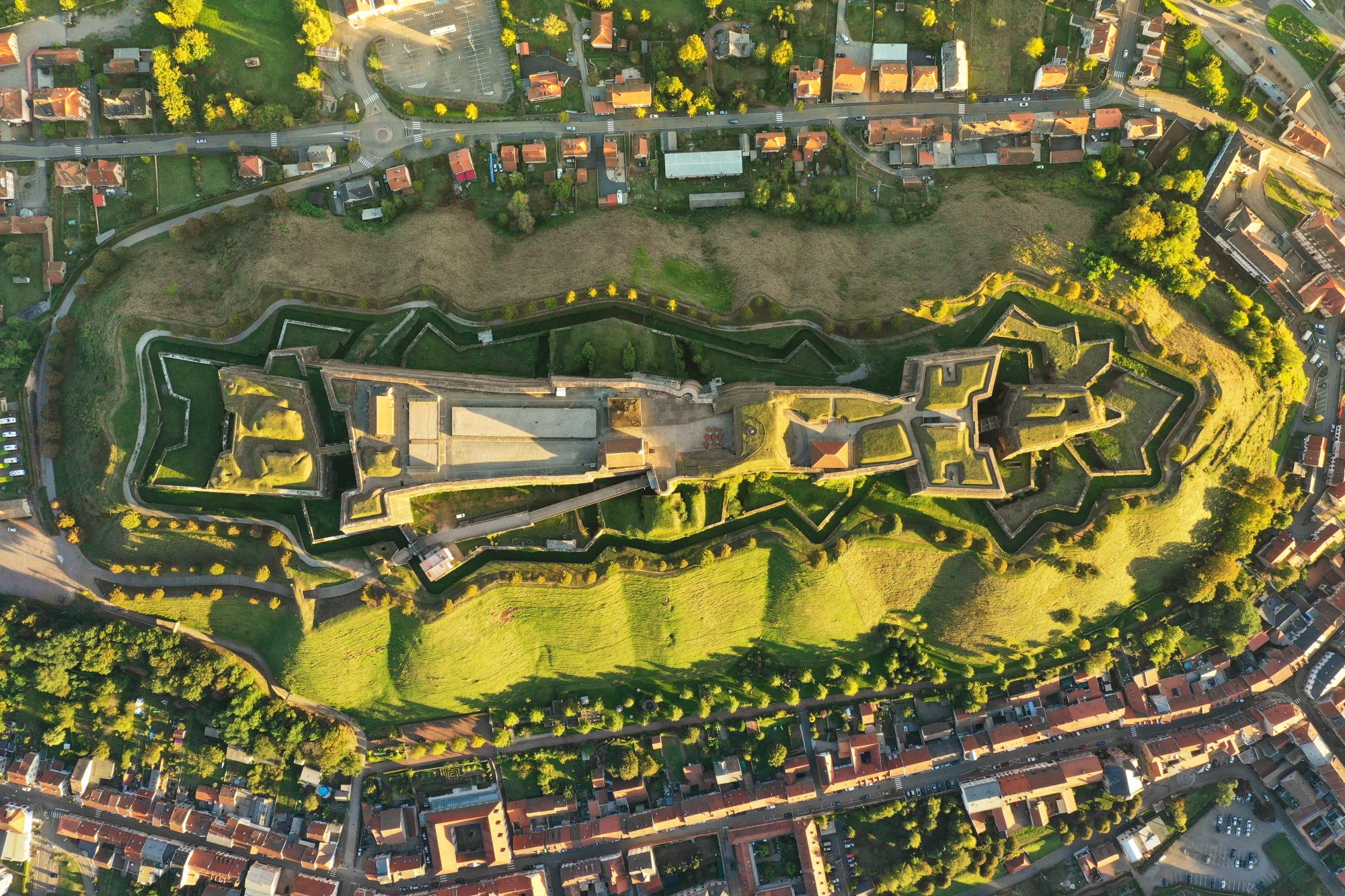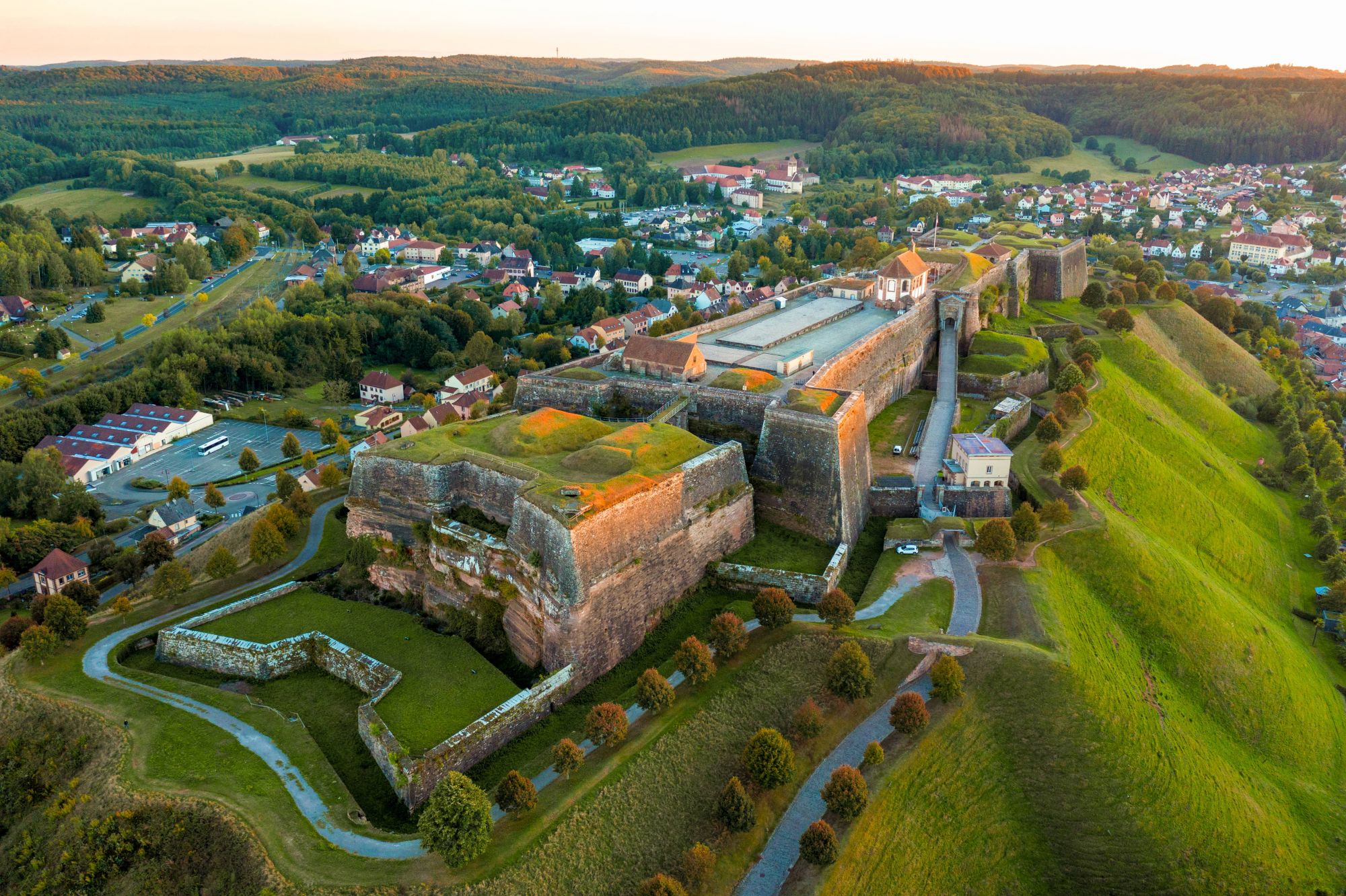 The second half of the 15th century marked a turning point in the history of military architecture. Indeed, the advent of the metal cannonball marked the end of the medieval castle. The high walls, hardly threatened by the stone cannonballs, could no longer resist and were disembowelled. The round towers placed at the corners of the fortresses leave blind spots for the defenders, making the defense of a place complicated.
The second half of the 15th century marked a turning point in the history of military architecture. Indeed, the advent of the metal cannonball marked the end of the medieval castle. The high walls, hardly threatened by the stone cannonballs, could no longer resist and were disembowelled. The round towers placed at the corners of the fortresses leave blind spots for the defenders, making the defense of a place complicated.
In response to this progress in artillery, the bastioned fortification was developed, first in Italy, then in the rest of Europe. The medieval tower was reinforced by the bastion, a pentagonal structure that gave its name to the new type of fortifications and allowed for a perfect flanking.
In France, the great name of the bastioned fortification is Sebastien Le Prestre, Marquis de Vauban, better known only as Vauban (1633-1707). He was an expert in poliorcetics, the art of organizing the attack or defense of a stronghold during a siege.
Vauban is particularly known for having provided the kingdom of France with a "pré carré", according to his own expression, a belt of fortified places to defend the borders of the kingdom. Thus, Vauban created, enlarged or adapted more than 180 fortresses, marking the French landscape with his engineering touch.
 |
 |
Vauban developed three consecutive systems of fortifications, but far from clinging firmly to closed theories, he adapted each time to the terrain as it presented itself. In theory, the bastioned fortification is low-lying, i.e. the walls are not very high, and the glacis surrounding the fortress is gently sloping. At Bitche, the opposite is true. The glacis slopes steeply, and the walls rise to an average height of about 30 meters.
